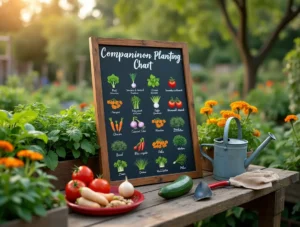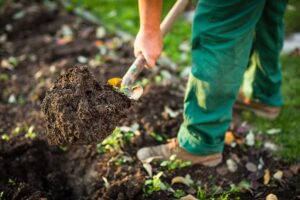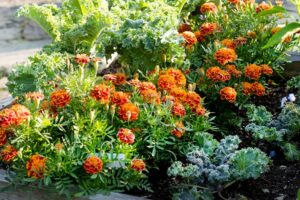Lily Of The Valley flowers are a timeless favorite among gardeners, known for their delicate, bell-shaped blooms and sweet fragrance. As a gardener with years of experience, I’ve cultivated and cared for these enchanting plants, and I’m here to share my tried-and-true tips to help you grow stunning Lily Of The Valley flowers in your garden.
On This Page
Understanding Lily Of The Valley
Lily Of The Valley (Convallaria majalis) is a perennial plant that thrives in shaded or partially shaded areas. It’s a hardy plant that can grow in hardiness zones. With its beautiful white or pink flowers and broad green leaves, it’s perfect for adding charm to shaded garden areas.

Preparing the Soil for Lily Of The Valley
For successful Lily Of The Valley growth, it’s crucial to prepare the soil properly. These plants prefer moist, well-drained soil rich in organic matter. Before planting, amend the soil with compost or aged manure to improve its fertility and texture.
Gardener’s Tip: I’ve found that a soil pH of 6.0 to 7.0 is ideal for Lily Of The Valley. If your soil is too acidic or alkaline, consider adjusting it with lime or sulfur as needed.
| Soil Preparation Tips | Benefits |
|---|---|
| Add compost | Enhances soil fertility |
| Ensure good drainage | Prevents root rot |
| Test soil pH | Achieve optimal growth conditions |
Planting Lily Of The Valley
When planting Lily Of The Valley, choose a spot in your garden that receives dappled sunlight or is shaded. Plant the rhizomes (pips) about 1 to 2 inches deep and space them 4 to 6 inches apart. The best time to plant is in the fall, allowing the roots to establish before winter.
Gardener’s Tip: Handle the pips gently to avoid damaging the delicate roots. I recommend soaking the pips in water for a few hours before planting to encourage quicker growth.
Watering and Fertilization
Lily Of The Valley plants require consistent moisture, especially during the growing season. Water them regularly, ensuring the soil stays evenly moist but not waterlogged. A balanced fertilizer applied in the spring can provide the necessary nutrients for healthy growth.
Gardener’s Insight: I’ve had great success using organic fertilizers, such as compost tea or fish emulsion, which provide a gentle nutrient boost without the risk of over-fertilizing.
| Watering Schedule | Fertilization Tips |
|---|---|
| Water regularly | Use balanced fertilizer in spring |
| Avoid waterlogging | Organic options like compost tea work well |
Managing Pests and Diseases
Lily Of The Valley is relatively pest-resistant, but it can be affected by slugs, snails, and root rot. To prevent pest problems, I suggest using organic slug repellents or setting up barriers around the plants. For disease prevention, ensure the soil is well-drained and avoid overcrowding the plants.
Gardener’s Experience: I’ve noticed that overcrowded plants are more susceptible to root rot, so I make it a point to divide them every few years to maintain healthy growth.
Pruning and Maintenance
After the flowers have bloomed, it’s essential to care for the foliage. Remove any dead or yellowing leaves to keep the plants looking tidy. Every few years, divide the plants to prevent overcrowding and encourage more vigorous blooming.
Gardener’s Advice: Pruning is a simple task that pays off in the long run. Healthy foliage ensures that the plants can store enough energy for the next blooming season.
Enhancing Garden Aesthetics with Lily Of The Valley
Lily Of The Valley is a versatile plant that pairs well with other shade-loving plants like hostas and ferns. Use it to create beautiful borders or to add a touch of elegance to woodland gardens. The plant’s low-growing habit makes it ideal for filling in gaps under trees or along shaded pathways.
Gardener’s Reflection: In my garden, I’ve found that Lily Of The Valley complements the structure and color of ferns beautifully, creating a lush and inviting landscape.
Conclusion
Growing Lily Of The Valley flowers can be a rewarding experience with the right care and attention. From preparing the soil to managing pests and enhancing garden aesthetics, these tips will help you cultivate stunning blooms that bring beauty and fragrance to your garden year after year.









